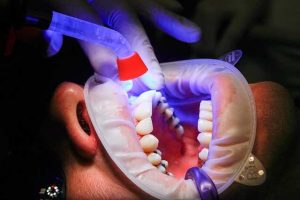Cavity Prevention Tacoma, WA
How to Prevent Tooth Decay
To avoid the dentist it’s best to adhere to a strict oral hygiene routine for cavity prevention. This includes brushing and flossing twice a day, regular dental office check-ups, diet control, and fluoride treatment.
Below you will learn about what causes tooth decay, and how you can prevent serious dental health problems with cavity prevention tips.
What Causes Tooth Decay?

How to Stop Tooth Decay: Tips For Preventing Cavities
By regularly following these preventions tips, you’ll have healthy teeth and avoid costly treatments!
Visit Your Dentist Two Times Per Year
How often you should go to the dentist depends on the many factors. As a general rule of thumb, you should go to the dentist two times per year.
Foods to Avoid
Unfortunately it is very hard to avoid these two. Brushing your teeth, and flossing after you eat these foods, however, will greatly help reduce your risk from getting a cavity.
Get Tooth Sealants
Dental Sealants protect these susceptible areas by sealing the grooves, preventing bacteria and food from residing in these areas. The sealant is a resin typically applied to the back teeth, molars, premolars, and areas prone to cavities and decay. It typically lasts for several years but needs to be checked during your regular dental office visits.
Strengthen Teeth With Fluoride for Cavity Prevention
Fluoride helps teeth become stronger and resistant to decay. Drinking fluoride-treated water and brushing and flossing regularly significantly helps in lowering the number of tooth cavities we’re likely to get. Dentists are able to evaluate the level of fluoride in drinking water and can also recommend fluoride supplements if necessary.
Fluoride is an important part of your oral health, and cavity prevention.
Cavities in Children – Thumb Sucking
Sucking that persists beyond the eruption of the primary teeth can cause improper growth of the mouth and misalignment of the teeth. If you notice prolonged and/or vigorous thumb sucking by your child, talk to your dentist.
South Sound Dental Care is One of the Best Pediatric Dentists in Tacoma.
Here are some ways to help your child outgrow the thumb sucking habit, and help cavity prevention:
- You won’t want to scold your child for sucking their thumb, but instead, praise them when they don’t suck their thumb.
- Thumb sucking is a comfort device that helps children cope with discomfort or stress. Focus on eliminating the cause of anxiety.
- Make sure to praise them when they are able to refrain during difficult times.
- Place a bandage on the thumb or put a sock on their hand at night.
For a full article on thumb sucking, click here.
What Happens if You Don’t Take Care of Your Teeth?
- Tooth Loss
- Dentures
- Dental Implants
- Dental Crown
- Yellow Teeth
- Receding Gums
- Root Canal
- Toothache
- Tooth extraction
- Gingivitis

